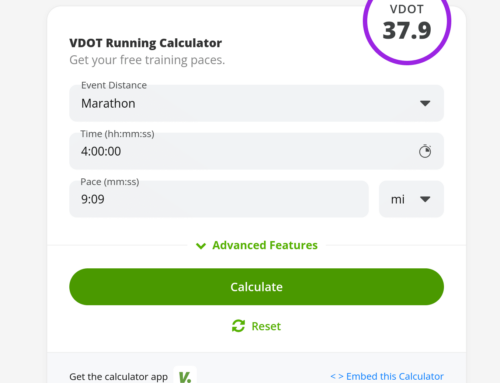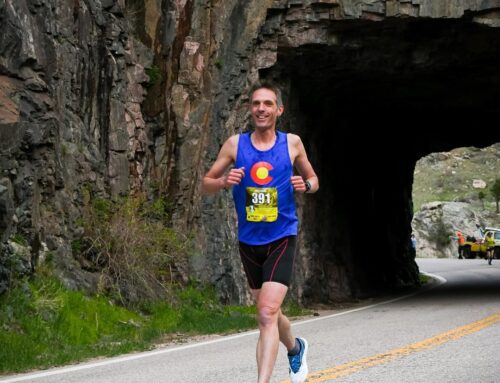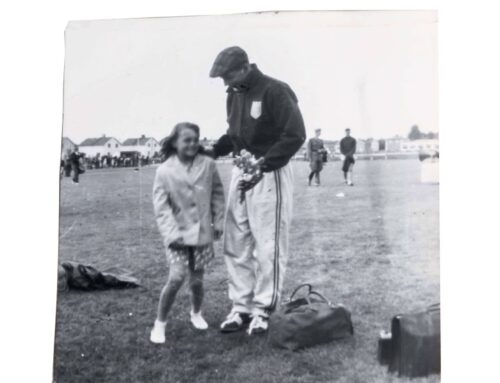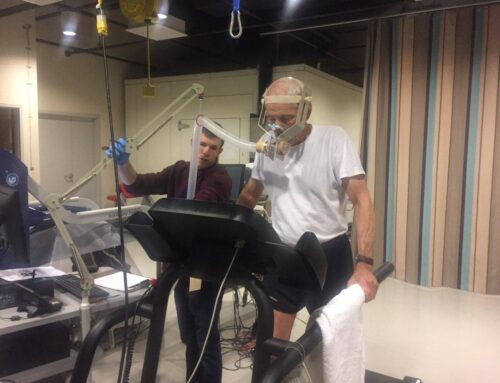By Dr. Jack Daniels
We hear a lot about “overtraining,” whatever that is. Some people call it “staleness,” others just say you are in a state of “athletic depression,” or, that you are “over-worked.” Researchers all over the country; no, all over the world, are trying to figure out how to identify overtraining and how to reverse the process so useful training can begin.
I prefer to spend my training energy toward something more beneficial – avoiding overtraining, by devising long-range programs that lead to not-so-fast improvements, but do lead to continuous progress over the best years of an athlete’s productive career.
Another way to avoid overtraining is to take “vacations from your primary sport,” something a world-champion runner once told me was her approach to the situation. Often these vacations are demanded of an athlete, due to an injury. Personally, I like to refer to these breaks in training as “setbacks.” Whatever they are, setbacks, vacations, or planned breaks in training, they seem to work wonders for many athletes, and maybe it is time to start looking at the potential benefits of these “setbacks.”
I use the term “setbacks” because that is usually how the athletes view them – training has been interrupted and they have been set back in the amount and intensity of training that they can handle. I think these setbacks can lead to success.
Who gives up at the earlier age in sports, runners or swimmers? There doesn’t seem to be any question that swimmers are more apt to toss in the towel at a younger age. Certainly, there are lots of reasons, but I tend to suspect that a big one is the lack of setbacks that the typical swimmer experiences. We constantly hear that running produces more injuries than swimming (the same can be said of cycling, of course), because of the trauma that runners have to face when landing over and over on their feet. Some experts even feel that runners may be better off if they did less running and more of some other activity (get into “cross training”), which, of course is saying a runner would be better off taking some breaks from running training (as presently being practiced).
Why would an athlete, who has trained, without any, or minimal setbacks over a 10-year career (as might be the case for a swimmer, from the age of 8 to 18, for example) decide to give it all up when just preparing to move into the prime years of an athletic lifetime? Probably because there have been few, if any excuses – no setbacks to blame – for not reaching greatness. I can imagine how discouraging it must be to train, unimpeded, for 10- years and not be able to reach some previously set, lofty goal. It becomes even more devastating to see younger competitors pass you by, on their way to possibly the same fate a few years down the road.
On the other hand, we have the typical dedicated distance runner, who has yet to get through two consecutive years of injury-free training. Just about the time a new plateau has been achieved, a new injury crops up, a setback prevents the individual from a National record or from making an Olympic team. So what happens is this individual returns from the setback with new vigor, with determination to show the world and himself/herself that the talent is there and that new records can be achieved. This process repeats itself numerous times throughout the runner’s career, and before you know it we have a very experienced, mature athlete who is determined to show how well a 30-year old can race. The setbacks have provided the impetus for reaching (near) perfection; the very lack of setbacks being responsible for athletes in other sports not reaching perfection.
There certainly seems to be a lesson in this somewhere, and it appears to me that the lesson is to plan breaks in training, and for those not secure enough to accept this training plan, to cherish the setbacks that come along on their own, because that’s what might be saving another career.
I guess what is really at work here is a process that extends the athletic careers of potential champions long enough to reach that level of greatness that is theirs for the taking. It can be achieved through a sensible approach to training; one that avoids most injuries or setbacks or avoids loss of interest because of its subdued intensity. It can be achieved through planned breaks in training, or, it can be achieved through the (unusually unplanned) use of “setback” training. An unplanned setback being an illness or injury and a planned setback being pregnancy, for example.
It is hard to not crank up the training load a notch when things are going your way. Personal best times always seem to come so easy and it is logical to assume that harder training will bring even better results. However, with age comes experience and confidence and I am certain that improvements that come in later years are just as much, if not more, the result of experience and confidence than they are of harder and harder training. Often when you think back on previous training, you remember the best workouts you ever did, and it doesn’t take long to convince yourself that those best workouts were just average days. The result is to try too many of those “average” days when it would probably actually take fewer hard days to reach the same degree of success that you enjoyed five years ago.
A philosophy that I have tried to follow is that training should be set up as a result of how well you compete. In other words, you prove, through competition, how hard you are capable of training. Base current training on what you have proved your fitness level is, in a recent competition. Naturally, when in a long period of pure training, during which you have no competition, training must progress, but the rate of progression must be slow and deliberate. There must be rewards associated with training, and what better reward is there to have a standard workout feel easier and easier over time. A better reward is probably a personal best time in a race, so you need to use races, or the feeling of ideal adaptation to training as a guide to changing the stress level of training.
If training becomes easy, make it a little harder, and when the new load becomes easy, move forward again. If training is increased and there is no positive adjustment (races are not better or training does not become easier), it is time for a setback, which can be achieved voluntarily or involuntarily – everyone usually has that choice.
Each year you reach new levels of fitness, new levels of confidence, and performance improves, the best possible sign that all is well. When this philosophy has been followed, training carries much more meaning and races become important tests of what your ability level really is. It seems so much more desirable to have your competitive efforts over-shadow your training runs than to spend most of your time reminiscing over great training sessions. It might be better to be thankful for those “fortunately-timed” setbacks, than to curse them; they may be the road to success.
Dr. Jack Daniels is the Head Coach of The Run SMART Project. To learn more about his online training products go here. Customize a training plan for your next race from legendary Coach Daniels here.




